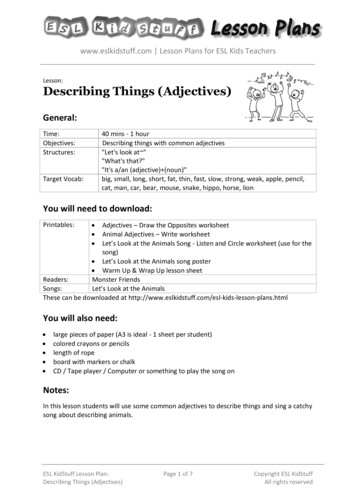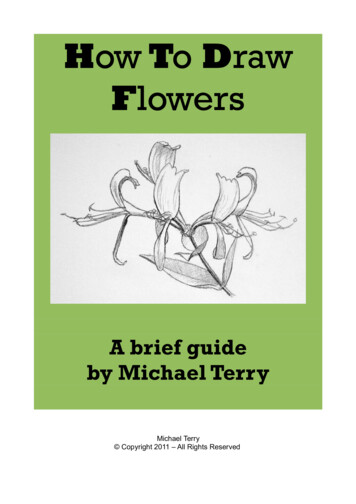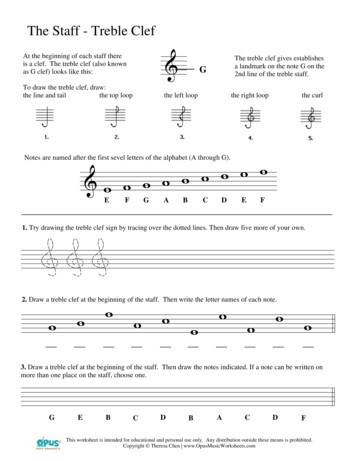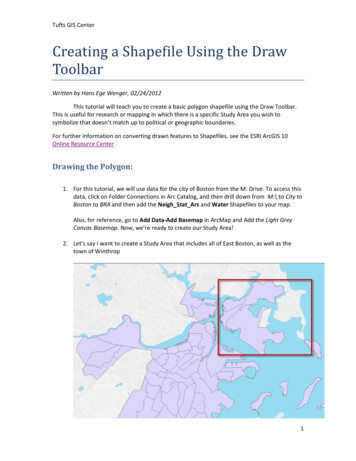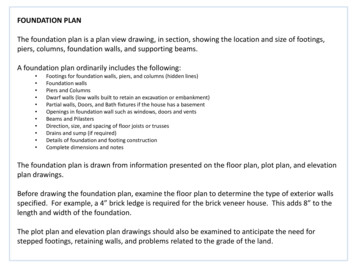
Transcription
HOW TO DRAW SB INKTREES & SHRUBSwitk notes on Blocking in ike Masses CKaracteristic Growth Contours Edges Brush&) Pen rendering How tke Designer interpretsNature Tree silkouettes close to Nature Dec orative and Conventional renderings Artist’sand Designer’s viewpoint Helps && Suggestions*L FREDERIC EHRLICH
SILHOUETTESOF TREES SO SHRUBSCOPYRIGHT1031HYFRBOBRICPRINTED IN THE UNITED STATESFIRST EDITIONEHRLICH
' lAAri--L8tvCop. ctU. OF ILL UB.
'ffiCONTENTSa*Sheet 1ChartForeword2By way of Introduction5Materials that will be required6Explanation of Charts Helps Hints and Suggestions1Elementary Brush and Pen Practice2Branch Growth * Various treatments of Leaf Masses3Trees and Branches suggesting Spring Growth4Blocking in the Masses * Contour Edges * Secondary Stem Growth5Characteristic Growth suggested by Light Flat Tones6Red Cedar * Spruce * White Pine * Walnut Jack Pine7Pine * Cypress * Sassafras * Larch * Privet * Young Birch8Wild Pear * Young Lemon * Linden * Rock Pine * Juniper * Spruce ‘Cedar9Old Apple Tree * Beech Lower Pine Branch * Wind blown Pine * Walnut10White Elm Hazel * Alder * Japanese Weeping Cherry Jeffrey’s Pine11Lower Branches of Plane Tree Group of Young Birch Chestnut * Upas12Pine Wild Cherry Cedar Thornbush * Upright form of Pine 6r13Lower Pine Branch * Young Birch * Elm Red Cedar * Wild Crab Apple 314Douglas Fir Elm * Lodge Pole Pine * Birch * White Oak Locustrer15Georgia Pine Lombardy Poplar * Tulip * Rhododendron Tupelo16Austrian Pine * Spruce Fir * White Willow Thorn * Poplar * Bhotan Pine17Young Beech Monterey Cypress * Woodland Growth * Stone Pine * Oak18Shagbark Hickory * Young Pine * Linden * Old Cedar * Spruce19Pine Beach Cedar Chestnut * Cedar of Lebanon20Willow * Pine * Hornbeam * Young Pine * Foxtail Pine * Cypress21Pine * Yellow Pine * Sea Grape * Azalea * Pin Oak Privet22Silhouette subordinated to Secondary Position23Same * Treatment of Sky Snow Effect24Decorative Treatment of Trees * Elaboration?rqt25 White Silhouette on Black Ground26Trees arranged and designed within Geometric Shapes27Foregrounds Leaf mass near the Top28Foregrounds * Continued29Silhouettes indicated as being in the Middle Distance30Foregrounds and their application to Cover Designs*
FOREWORDD This portfolio of charts has been arrangedprimarily, for the use of students who are inter ested in knowing something about the elemen tary practice involved and the first steps neces sary in the drawing of trees in silhouette. It is mybelief, that if a good clear conception of funda mentals is first mastered, supplemented withcareful observation, drawing and construction,the student will be better equipped to proceed andconsequently a more rapid progress made. Thedifference between a very good silhouette andjust a silhouette is a matter of study and back ground. The better the background of study themore valuable the result and the less need ofcopying the drawings made by others.JH'If these charts prove to be of help and guid ance to the student or, stimulate the desire forthoroughness, my task at least has served a usefulpurpose and the time spent in their preparationhas not been in vain. Sometime in the near futurea second portfolio of charts will be published,wherein the silhouettes will be of the conven tional type, as applied to block printing, piercedmetal work, stencils, etc. In the meantime thereis plenty of work ahead in drawing them closeto nature, so that when the attempt is madeto conventionalize them, the student will bethoroughlyfamiliarwiththecharacteristicshapes that nature offers.Sheet 1
INTRODUCTIONDrawing a tree, plant, or woodland growth in silhouette is notquite the easy task the student imagines it to be. On the contraryit requires a technique and handling all its own. The silhouette ofa tree,if it is to remain close to nature should preserve its charac teristic growth, shape .contour, branch structure, etc. Drawing insilhouette is designing. It is far removed from rendering in pencilor water colors.When the artist sketches a tree with the idea of rendering it inpencil values, he is trying for an effect of light and shade. He seeksan interesting combination of subtle tones in contrast to darkermasses. He may vignette the outer edges of the tree until they fadeinto the white of the paper, or on the other hand he may be tryingfor bold snappy dashes of contrasting values. In each case he worksin broad masses, makes use of those accidental effects of light andshade that will add interest to the sketch. He eliminates detail andsees only the general shape and the relationship of masses andtone balance.a* When the designer goes to nature with the idea of rendering atree in silhouette, he draws in two dimensions, he seeks shape, con tour, growth. He thinks in terms of outline and flat values. He seekstruth and facts. The small irregular spaces between the branchesand leaf masses are all important factors. Light and shade are of noconcern. He sketches the tree in outline as it stands in dark con trast to the setting or rising sun, looks through the open spaces andsees countless number of branches, twigs and leaves, silhouettedagainst the sky.Practice and experience has taught him that, when he attemptsto delineate what he sees before him, some of the elements and de tails must be emphasized, others subordinated, and those that areof minor importance entirely omitted. The small straggling leafletsmust be drawn into the larger masses, and with this, shape and con tour must not be lost. All effects of light and shade are reduced totheir simplest terms.* This is the technique of the silhouette. Generally speaking,Sheet 2
IvSU,. ,200 2U. OF ILL LIB
there are two ways in which a tree can be rendered. One way is to render it withall detail and true to specie. The other, to merely suggest the general shape andcharacteristics of the tree. With this simplified handling, considerable detail, espe cially of the apertures between leaves, is entirely ignored, and the drawing con sidered an impression of tree growth rather than a careful study.A The silhouette of a tree naturally changes with the seasons. In spring and fall,branches and twigs predominate with but little leaf growth. As summer approacheseach specie is sending forth characteristic leaf growth, developing into largermasses as the summer advances. The outside edges of each individual specie aregradually creating a pattern of curves, angles, or soft willowy effects. These vari ations should be carefully observed and with this careful observation the studentwill soon “know his trees.” It is good practice and an aid to memory drawing, togo to the park in early spring, sketch any one of the smaller trees of simple branchstructure, keeping the sketch within 7 inches in height. Draw only the trunk, mainbranches, and any of the secondary branches that are deemed necessary. Ignorethe many little twigs that are scattered over the entire tree. After your drawingis finished, trace it on two separate sheets of paper, and repencil. Return to the samespot and in the same position several weeks later and sketch the new leaf growthon the second drawing. Then when summer is well advanced finish the thirddrawing. You will thus have a record of growth in three stages finished in pencil.These drawings should represent only the characteristic growth of the tree andnot be a record of botanical exactness. Such practice leads you to observe and makenote of, but what is most important, to remember.A The silhouette of a tree also changes in regards to the small apertures betweenthe leaves. When a tree is silhouetted against a clear bright sky, considerable de tail and a greater number of openings are seen than when this same tree is silhou etted against a dull grey sky toward nightfall, or with a background of other trees.In the latter case a good deal of the contrast is lost, many of the smaller openingsdisappear and seem to merge into the larger masses.A Trees in silhouette serve a variety of purposes in the commercial and manu facturing field. They are used as headings, end pieces, or as decorative spots onthe printed page. They are also used as designs for book covers, title pages andtrade marks. In the manufacturing branches they serve as decoration on parch ment and pierced metal shades, tiles, linoleum cuts, wood blocks and stencils, trays,pottery and china, tallies, place cards, score cards and as framed pictures.AWhen a tree is used as a silhouette design for the printed page, one is at libertyto use it either in all detail and remain close to nature; it may be an abstraction,or a highly conventional treatment. It is purely a matter of personal likes or dis likes, but when the silhouette is designed with the idea of using it as a motif inlinoleum block printing, a considerable amount of simplification is necessary dueto the process involved in cutting the block and the limitations imposed by the ma Sheet 3
Ek.8U.Cop. g.U, OF ILL LIB,
terial. Then we have the silhouette that is purely imaginative in form; where thedesigner wishes to create a more or less fanciful arrangement and where decorativeeffect is uppermost in his mind.When we approach the subject from this angle, we no longer deal with treesor shrubs of any named variety but as abstractions or ideas of growth; this growthto be persuaded to take certain lines of design or decorative shapes. The branch ofa tree may actually be quite straight and exceptionally severe in natural growth,but because it furnishes an idea or motif for decoration it is brought into an orna mental state, by changing this rigid growth into rhythmic, gracefully curved lines,with leaf masses and twigs changed in shape and proportion to better serve thedecorative effect of a free rendering, not enclosed within a given space.Then again a tree such as the Elm is taken as an idea of growth; the longgraceful drooping leaf formations of such trees as the Willow are added to thelower branches, creating a form which would not be a direct imitation of nature,but where human invention and imagination plays a part. Chart 24 shows severalexamples of this method of interpretation. On the other hand the designer may not be thinking in terms of curves orelaborations, where realism will play no part, but where line and mass arrange ment receives first consideration; the motif relegated to secondary importance andthe resultant design so abstract in character that there would be little means ofidentifying the kind of a tree intended. The merits of the design would dependupon the question, is it orderly, well balanced and interesting with regards to lineand mass composition.3P To whatever degree your motif is conventionalized, or no matter how closeyou may stay to nature, the important fact remains that a knowledge of the shapesand characteristics of the various trees and shrubs is important. This would implycareful studies that lend themselves most readily to the designer’s needs or thosethat give him the greatest inspiration in his search for the ideas that nature offers.When going to nature with the idea of rendering the wonderful array of shapesand forms which she has to offer, when we seek inspiration from her great store house of suggestions that are always at our command, we must be prepared tobring something to nature in the form of preparation, drawing technique, etc.Nature will furnish the motif but she insists that the method of delineation shallcome from the student. If our materials are brush, pen and ink, then we mustknow something about how these materials should be handled. If we are thinkingin terms of “Silhouette,” then limitations are immediately imposed upon us. Thepen or brush will overcome those limitations only to the extent of our knowledgeand experience in their use, with the control we have over them and the ability tomake them do just what the mind dictates. This of course cannot be gained by read ing. It means practice and application; trying again and again until that pliabletricky little tool with which we are working, will and shall, do as we wish.'***n&TSheet 4h
ap -Z s'U. OF ILL LIB.
AMATERIALS4 The student should be equipped with the proper materials; the following willserve all purposes in the beginning of these studies. An HB and a BB pencil. Asoft pliable eraser. Three number 290 Gillott Pens. A bottle of black waterproofink. A number 2 and a number 4 medium priced red sable brush. Several sheetsof ledger paper, and a blotter.fl Use the HB pencil to block in the masses and the BB pencil to spot in theif:values. The 290 pen is an exceptionally valuable instrument, inasmuch as it willmake from the finest kind of inked line,to an exceptionally heavy line or spot whenpressure is applied. The pen improves with usage, but its life is none too long. Con stant pressure and the spreading of the fine points tend to cause the pen to lose itselasticity and snap at any moment. The number 170 pen is also very useful and in expensive. It is not quite as pliable as the 290 pen, will not make as broad a strokeand it is well to experiment with both. A“crow-quill” pen, although possessing afine point, lacks the flexibility of the 290 pen and I advise against its use.Regarding the brushes, do not buy a camel’s hair brush. The hair is too soft,Ifhas absolutely no life and when used will not spring back to its original shape. Ared sable brush is the only kind of a brush to use. It should possess a fairly finepoint, the hairs should be flexible and immediately spring back to their originalshape after being used.IA new brush is not recommended for inking in silhouettes. Brushes with pointswell worn down from use, make for the best results. The number 2 red sable brushis used to spot in the outline texture of the smaller drawings, and the number 4for the larger ones, and to fill in the black areas. j*) Very few students are familiar with what is known as “Ledger Paper”* andyet it has an ideal surface for inking. In the tests that I have given this paper,I have found it to be superior, as far as toughness of surface is concerned, to any“Bristol Board” now on the market. It retains a much smoother surface aftererasing and does not “pick up” with the pen, as does the Bristol. It is not quite asheavy in weight as a two-ply Bristol, and when a large surface is inked, there is atendency for it to buckle, but its other advantages far outbalance this disadvantageIf the paper should buckle, allow the ink to dry thoroughly, dip the entiredrawing in water. Dry between two blotters and the buckle will have disappeared.*// your local dealer cannot supply this paper, it can be purchased at Cooper Union Supply Store, Seventh St. and Third Are., N. Y. C.V\Sheet 5
Op-SiU. OF ILL UB
EXPLANATION OF CHARTSHelps, Hints Sd Suggestions 4C If the student hopes to attain any proficiency in the art of rendering a tree insilhouette, it is most important that the pen and brush practice as shown in Chart 1be thoroughly mastered. This elementary practice is of great value and the studentwill become aware of this fact as soon as the first tree is attempted. When thestrokes are understood and the student feels that progress has been made, thenChart 2 should be carefully read and intelligently copied. While copying them, thestudent will realize the importance of having the brush in proper working condi tion, the hand in the correct position and know just what character the spot is totake. Is a spring-like growth to clothe the branches, a mass effect desired and inwhat direction are these masses to grow?The brush should never be fully charged with ink, especially on the smallersketches. The partly charged brush will always give a better texture and finish.The brush that is but slightly charged will give a more feathery edge and indicatea smaller leaf growth particularly, if the number 4-brush is used. As the brush holdsbut very little ink, it must be recharged frequently so that no change in the char acter of the edges will occur. When inking the branches the 290 pen will be foundeasier to handle than the brush and the stroke should be made in an upward, ratherthan downward direction. With the upward motion the pen and also the brush isgradually lifted from the paper, insuring a finer line at the end of the branch ortwig; this is as it should be. With this style of stroke a more rhythmic and relatedbranch growth is obtained.The brush and pen are very often used in combination on the same drawingas shown on Charts 2 and 3. Here the smaller branches have been inked with the290 pen. The first illustration on Chart 3 shows the rhythmic motion and clean cuteffect that can be obtained with the upward stroke, with the hand kept well to theright of the drawing. On Chart 4 the branch of a tree is blocked in with an H. B.pencil. The light values as well as the dark values have both been finished withthe 2B pencil sharpened either to a chisel point or rubbed down on a piece of paperuntil one edge has been flattened and broad strokes can be made. When tinting inthe light value, do not neglect the smaller apertures and branch growths and bereasonably sure that the irregular shaped openings will show branch or leaf sepa rations and not just holes indiscriminately placed. - Let us pass up inking for the present and study Chart 5 Here the same funda mental principles are involved and applied to the entire tree. Note how definitelyand decisively the shape and characteristic growth of each tree is shown. In thelower portion of the chart the outside edge of the tree has been inked in with the9.Sheet 6
U„ OF ILL LIB,
brush to show that stippling motion of the brush is used to define the edges. Theexamples on this chart should be copied by the student so as to gradually under stand the technique involved. If the foregoing charts have cleared the way to a better understanding of thepreliminary studies, inking in is in order. When inking the edges, begin at the lefthand side, decide just what character the outer edge is to take and keep the samecharacter throughout so that the right hand side will be in harmony with thetreatment on the left hand side. The outer edge of the tree should not be inkedbeginning at the outline but should be started some quarter of an inch from thepenciled line to give the brush a chance to get its stride; then gradually workoutward.4b If the inking is started at the penciled outline and any mistake is made, itnaturally would have to be corrected outside of the limits of the drawing,therebychanging the size and in many cases the entire shape and edge is hopelessly lost.4i We now come to the charts showing the trees, shrubs and smaller plants insilhouette. They have been drawn to show the true shape and characteristic ofeach tree and are faithful interpretations of each specie as near as the limitationsof a silhouette will allow. On these charts, facts have been recorded. These areshapes and forms that nature offers and with which the student should first be come familiar, before making any attempt to elaborate or conventionalize. In somecases the same tree has been used several times. The reason for this is to show thatalthough the trees belong to the same specie, they do not all grow exactly alike andthat there are many different species belonging to the same family.4b When the attempt is made to draw these trees they should not be laboriouslycopied mark for mark and dot for dot as this would be a more or less difficult taskfor the beginner and would not serve the purposes for which they were intended.If the student was to make an exact copy of these trees with an eye for detail andexact reproduction,the possibilities are that there would be a tendency to forget theessentials to neglect the trees’ general aspect, relation of masses, characteristicsand growth. While thinking of detail the eye would be focused on one point, where as in inking, the whole tree should be taken into consideration and interpretationof general character, branch and leaf formation attained. Even the experienceddesigner would probably be unable to draw two trees exactly alike. They wouldappear to be alike, but this would only be due to the fact that he had reproducedthe spirit of the characteristic growth and shape. As far as detail of texture or ren dering is concerned, they may not be alike.4b What then are these characteristics of growth that are so essential? First studythe tree and then decide, or ask yourself these questions. What is the general shapeor contour of the tree? How do the branches grow? Is there a tendency for themSheet 7
U-lv&K/Cop.ctIS. OF ILL UB«
itto grow downward, upward or at right angles to the trunk? Do the leaf massesappear to be separated, grow in clusters, take a vertical or horizontal direction?Are the edges soft and willowy, feathery, angular, or ragged? These are the essen tials. If you recognize them, see that you emphasize them in your drawing and donot lose these essentials when you begin to ink.Chart 22 shows the decorative character the silhouette assumes, when a whitearea in the form of a tree trunk is introduced as a foreground and the tree subor dinated to a secondary position. Chart 23 shows a further application of the treein outline as a foreground and various effects produced by the way in which thesky has been treated. The change that takes place in the examples shown on Chart24 is due to an elaboration of growth and detail. The trees are still close to natureas far as growth is concerned but they have been brought into a decorative stateby the manner of treating the contours and the branches. The examples shown on Chart 25 reverse the process of black on white towhite elements on a black ground, giving an entirely different contrast. This ef fect is produced by charging the brush or pen with show card white, on blackshow card stock. When using the white, first stir and mix the color in the jar, puttwo or three brushfuls on a sheet of paper, have the brush well charged with thiscolor and with a fairly quick snappy motion, without pressure on the brush, applythe white to the surface. If the pen is used, a ball pointed writing pen gives thebest results. Do not attempt to use the 290 pen. When using the white with thepen it will be necessary to thin it down just a trifle. If, after the white is put on thepen with the aid of the brush and it will not mark, it means that the consistencyof the color is too thick; if it drops off too readily you will know that it is too thin.Experiment until you get the color to the right consistency. When the color is onceapplied to the paper and has dried, difficulty will be experienced in trying to goover the part a second time. If a mistake has been made, rather wash the color outwith a brush and clean water, blot it, repeat the operation until all traces of whitehave disappeared. Allow to dry before making a second attempt.Chart 26 will give the student an idea of how a tree can be arranged within agiven form. Very little change has been made as far as growth is concerned, in thedrawings marked with the circle. They are merely silhouettes of trees, portionsof which have been cut down so that they will conform to the geometric shape en closing them. The only design that can be attributed to them is the balance of thespace and mass arrangements. The tree designed within the octagonal shape, andthe first two at the bottom of the chart, are merely symmetrical arrangements,based on tree growth.H!Charts 27-28-29 give the student a very good idea of how a tree can be usedas a foreground in a problem of space cutting, without any practical application inmind. When the foreground plays so important a part in the composition, and theSheet 8
Ii‘fclvBlvGop.2.
«motif has been reduced to its simplest terms, the only other consideration thatneed be given is the middle distance, and in many cases it is just a balance of fore ground and sky. Compositions of this nature are far more valuable in the study ofbalance and space cutting on account of their simplicity, than those the studentsusually design in which roads, houses, fences, fields, ponds, etc., are introduced.When these are shown in perspective, the beginner soon finds that the problem isbecoming very much involved.Chart 30 shows how these foregrounds can be used in a practical way. Herethey have been used in the designing of covers where trees can be used as a motif.The first consideration must be giverl to the balance of the lettering,the position it isto take, the number of words that must be used,and if the copy can be consistentlyseparated. The balance of the lettering and the composition must go hand in hand.Never plan any composition without considering the lettering. So many studentsthink only of the tree or landscape and then try to fit in the words wherever thespace will allow trusting to luck that it will fit. If this is attempted, it will natu rally throw the entire mass of lettering out of balance or necessitate the divisionof the copy.ffil When a tree is placed directly in the center of the space as in the first arrange ment on Chart 30, the place for lettering is limited to the lower portion; number 2allows for lettering in the upper and the lower portion of the design. In number 6the lettering can be placed in the upper portion because of the black area; number7 again limits the lettering to the lower portion. Number 8 allows for considerablelettering in the foreground. Number 18 shows how difficult it would be to prop erly balance the lettering, when the landscape was uppermost in the mind. It willbe observed that some of the designs allow for a white margin around the land scape, while others are designed right to the cutting edge. Both are correct. If the student should wish to finish the individual trees, or the foreground ar rangements in less contrast than black and white, I would suggest as the first ex periment a brush full of Show Card black be mixed with a small quantity of white,to a middle grey value; paint in the tree with this grey. The contrast will then bereduced just one half. If more white is added, a lighter tone results. If a smallquantity of light blue, yellow ochre, or yellow green, be added to the grey a moreinteresting and warmer color will result. These combinations can be tried on white,cream, tan, or light grey stock and the color changes noted.Sheet 9
0* OF ILL LIB.
Chart 1before, attempting io draw /fie frees in silhouette, /ttese brush strokes should he practiced.fife student willnotice thcd With a /certain control of the brush,,many interesting & accidental effects will resultThis is not so much because ofththa ndti rig , hut dice to the peculianlu gfthe brush & if chayucteristic marks, the o indicates the position of the hand white inking, & ihe arrow the direction ofthe stroke.Effects similar fo the examples shown above, aJie produced by first charging the brushwith. veYig little ink, tfien lightly thump. the point of the brush an apiece of paper to separate the br/st ole. sand with a fairlu rapid {notion, bud with perfect(control, fry for murks similar do the about.PENPRACTICE!/ITfiese strokes are made with theJffi ZfO pen.ffote the Aear & crisp edyes. ifhenjhis effect isadesired use the petv, when wi softer or more of a mass effect is required use the brash.FKE efZ«C eHtfUCH.
JXJ- lEU-SW,CDp.
Chart 2 AeBRANCH n the various EFFECTS PRODUCED/ k W? TREATMENT /i/m gw /Showing Hit /change that hakes place, in Hie general /appearance of a, "branch, when Hie treatment cr technique is /hanged,io/gam a desired .effect, ffie pen/gives a clean, cnspsnappq effect,white tfie brash rendering, gives a softer effect*brush.Hits Sranch Structure fas loeen used in each of the above /drawingst bud tfie .treatment given tfe branch fas been changed290Tenifhen ci DecorativeTffed is desiredthe branch structare, must be sodesigned.RwSameft downward pressure,w'rfh a 290 pen givesthis general tffed.greater pressure'would give an entireludif- *1deft fS 1931yVedericEKvlicnstructure, ftbrush usedin thisCase.
!tk8LClop, J. OF ILL LIB.r
'Ek.Sk,Cop. ’ZjU. OF ILL LIB,
Chart 4BLOCKING inti* MASSES interpreting Me. EDGES & e SECONDARY STEMS*I\diet hod ,ci'defining the edqes & shapeof rebranch, with maw stems indicated.Open spaces in the leaf mass shouldhe indicatedrd the brunch structure,*and near the edqes.dhefinished ,dvcLiomqshewing the positton of the open/nqs, &the secondary stt*em tried to the mam branch./L first sketch.Blockinq m theqenerafl shapeof tde tree., Jtftertfie tree has en blocked, in the outerofwuld heir feed in, inter na ihe pyenerul nppearanif . - ,rk leaf& braned formation7fie outer edqe ofthus tree, shows ran entire ly different efiaraeiep dueto tfehxzrdliny & posit ion of tfle brush while inkincj )43l FfUD6i?/c&HRUCN
1-7 41D E k.SlvQop
VSgsGgSy 3n' 18 I V5 FREDERIC EHRLICH
Chart 6V.edCedarfipruceWhile VineINallnu'lJack Tim
Lii cvV 01Uop.R,0* Of JLL UB
mmChart 71931FRED&fttCEHRU C.H
E k,8WCLop.2 U. OF ILL LIB.
Chart 8YoungLemonKoreanTdUd VeterTreeJlmericunLindenNor mySpruceCommonJuniper
tL8lvo p-«v
Chart 9Vind blownlower pari orfJlusbianPinePnglishWalnut FREDERIC EHRLICH 1931
K.6LcIcp' U» OF ILL UB.
Chart lOylearl leRed MiTOhite61m(Central TurkjJfaxel Tti(China,) JapaneseZJeepiny CherryJefir i/s Rine(Shmted SpecimenL
c.M-f' t k&LQod- 7 U. OF ILL LIB.J
Chart 11yoiitwPlane TreeBirch 1931Cheshmr.
aS c&Chart 12
JL\ITEL8ivaopj,/U* OF ILL Lib.X
FREDERIC EHRLICHChart 13Si
L c{ kSUCiOp.Z,U, OF ILL LI Bo
Chart 14
Chart 15
1 L;.k,SLGop-2Ly4 OF ILL UBc
5' r y 3 ’1,iki Chart 16
Chart 17
W, 8U Cop. -»y» OF ILL. UB,
Chart 18
Vl . Lfik, .U» OF ILL LIB.
Chart 19 HfcHMMijwammlMbv\fP CLv a 3*43rMWffBp».W8
- ;*r ?P k B
Draw only the trunk, main branches, and any of the secondary branches that are deemed necessary. Ignore the many little twigs that are scattered over the entire tree. After your drawing is finished, trace it on two s

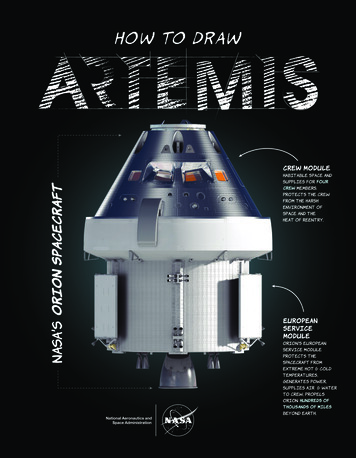
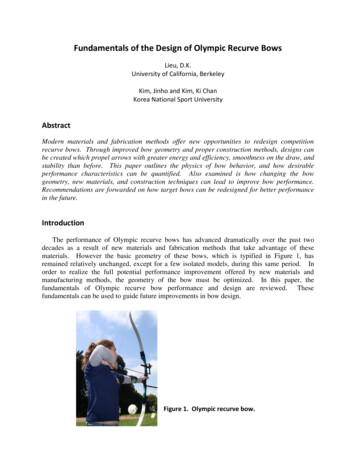
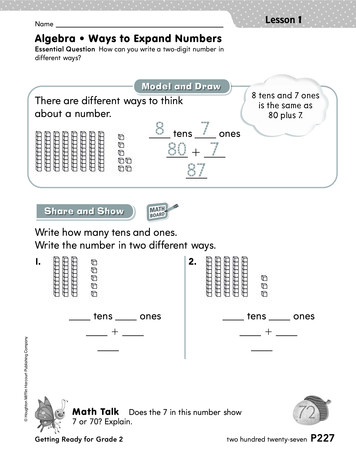
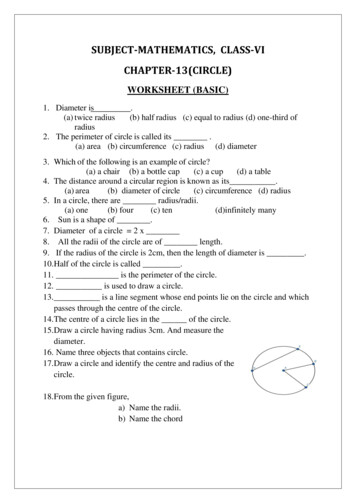
![March 3rd, 2017 [Manage Archive in Microsoft Outlook 2016]](/img/34/archive-outlook-2016.jpg)

